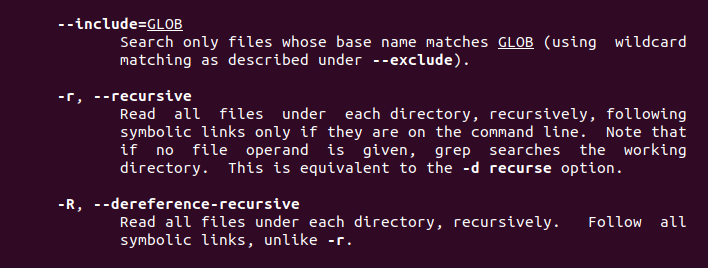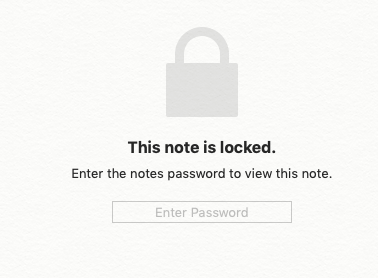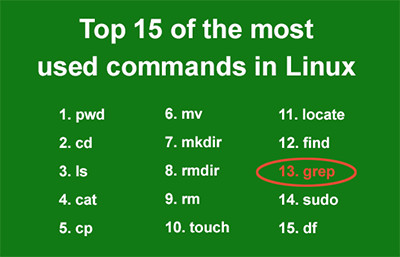
The closest I could find was do a launchctl dumpstate and grep for the service name. There doesn’t seem to be easy way of finding the.

They don’t require anyone to be logged in.

They obviously require someone to be logged in to run. Agents are services run for the logged in user (the output of my launchctl list command above without a sudo).There’s two types of services as far as launchd is concerned. Yeah, a bug, and a mildly annoying one at that.įortunately, there are shell aliases and that’s a far easier way to solve the problem. In fact, after some experimentation I conclude that the support for environment variables to get “grep” to always display the results in color. Seems like you should be able to specify something like “GREP_COLOR=always” or “GREP_COLOR=–color=always” but turns out neither works.
#MACOS GREP OPTIONS MAC#
Let me show you the difference…įirst off, here’s a search for which of my “dot” files (files in my home directory that begin with the ‘.’ to hide them from the Mac Finder) for the word “alias”:Īdd the parameter you reference, however, and it’s a lot easier to see where the pattern’s match appears:Ī look at the man page for “grep” offers some information, but it’s not very useful: The output, however, can be confusing, hence the desire for color. Or you can find all the files in a given directory that include the old battleaxe’s name: “grep -i brunhilda *”. Want to find all the lines in your novel that reference Brunhilda? You can do that in grep with “grep -i brunhilda my.novel.txt”, for example.

If you’re not sure about what “grep” does, it’s a pattern matching program. Now on to your query! What you’re asking about is a great feature in the modern “grep” program that has the program highlight the segment of each output line that matches the specified pattern. Which isn’t to say that I just want a command line interface, that’s definitely not true! But still, if I’m renaming a group of files, connecting to my Web server to edit a configuration file, or similar, command line is the way to go.

I use the command line on my MacBook every single day and find it considerably faster and more efficient than using the graphical interface for administrative tasks in particular. It will be nice to have the new readlink -f option available going forward, but if your script still needs to support versions of macOS older than 12.3 then you should prefer to use the zsh expansion modifier.
#MACOS GREP OPTIONS FOR MAC OS X#
First off, glad you grabbed a copy of my book, the latest version of which is Learning Unix for Mac OS X Mountain Lion, and are finding it a good reference. The removal of Python 2 is the likely explanation for why Apple chose to update readlink in 12.3.


 0 kommentar(er)
0 kommentar(er)
